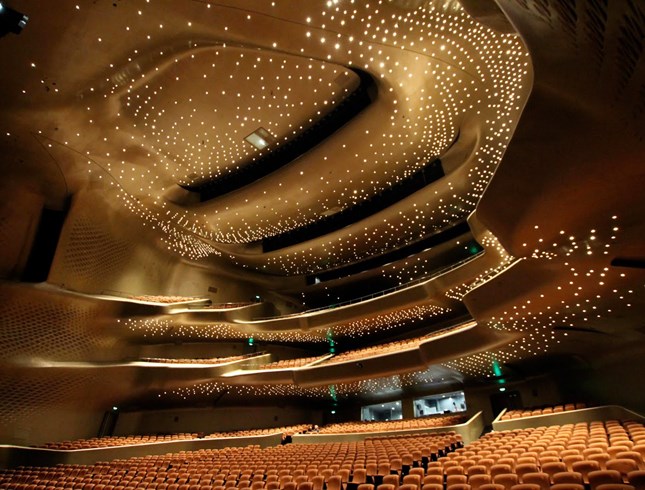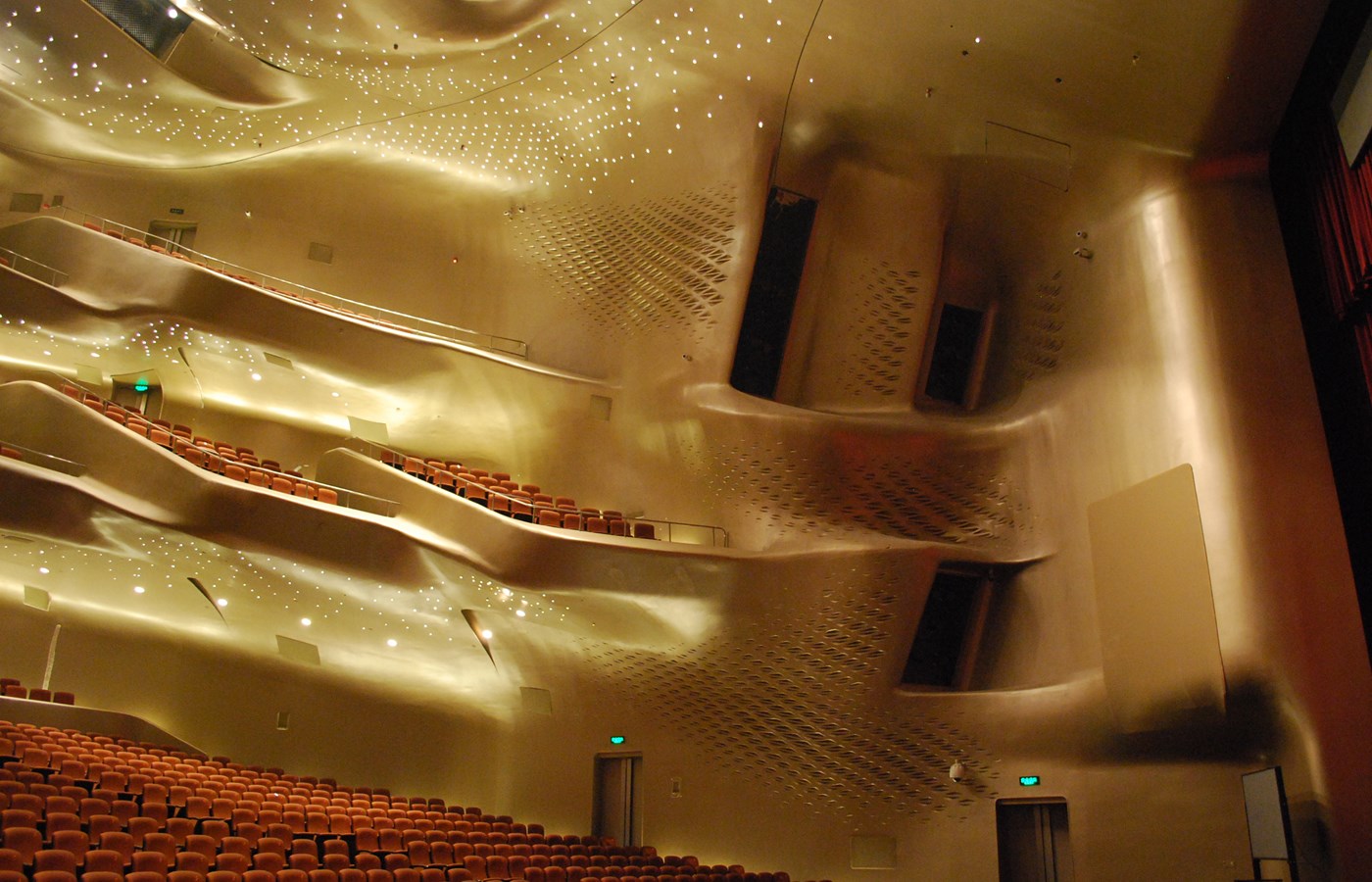客户
Guangzhou Municipal Government
位置
Guangzhou, China
竣工时间
2011
Marshall Day Acoustics was selected for this project as part of a rigorous tendering process and the result is a beautiful asymmetrical auditorium design with the acclaimed London based architect, Zaha Hadid, who won the design competition in 2003. A technical paper describing the acoustic design can be found here.
This US $120 m development is one of the biggest cultural projects in this city and, at 1,800 seats, is expected to become the biggest performing centre in South China and to be one of the three biggest theatres in the nation.
Guangzhou Opera House won the best cultural building at the 2011 RIBA International Awards.
Our Brief
Located within the main building, the Grand Theatre features an asymmetrical auditorium lined with moulded panels made of glass-fibre reinforced gypsum.
Marshall Day Acoustics worked closely with the architect to deliver finely balanced room acoustics which involved a computer model acoustic study, as well as supervision of the construction and testing of a 1:20 scale model of the auditorium to verify the computer model predictions. The internal design of the rehearsal rooms was developed with the architect to incorporate acoustic treatments into clean, flowing and distinctive interiors.


“MDA has developed a unique collaborative process involving 3-dimensional technologies to deliver proficient, yet original design accomplishments. The internationally recognised success in the acoustic designs of the Guangzhou Opera House is a reflection of this testament.” - Woody K.T. Yao, Associate Director, Zaha Hadid Architects
In addition to the room acoustics, Marshall Day Acoustics was engaged to assess vibration transfer from the adjacent railway line and to review the design of mechanical services using our in-house analysis software.
Excerpt from The Guardian
"The space is asymmetric, but despite its unusual shape, the acoustics are perfect; the work of Harold Marshall, the veteran New Zealand acoustician. Intriguingly, he says that the strange angles of Hadid's auditorium work to produce an acoustic perfectly suited to both western and traditional Chinese opera. "There are very, very few asymmetrical auditoriums," says Marshall. "But asymmetry can be used to play with sound in very satisfying ways; it's more of a challenge tuning it, but the possibilities are greater, and this one has a beautifully balanced sound." Could it have been done in Cardiff Bay? "Of course it could." - Johnathan Glancy

"The auditorium itself is pretty big inside, but still has an intimate feeling. I must also say that the acoustic is fantastic - not too dry and not too bright"



